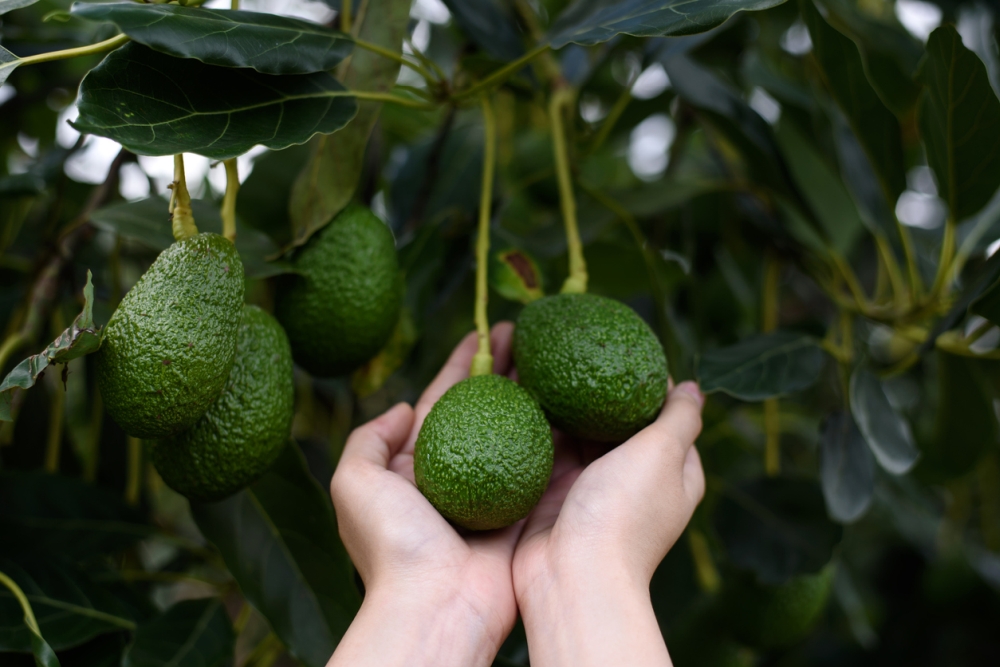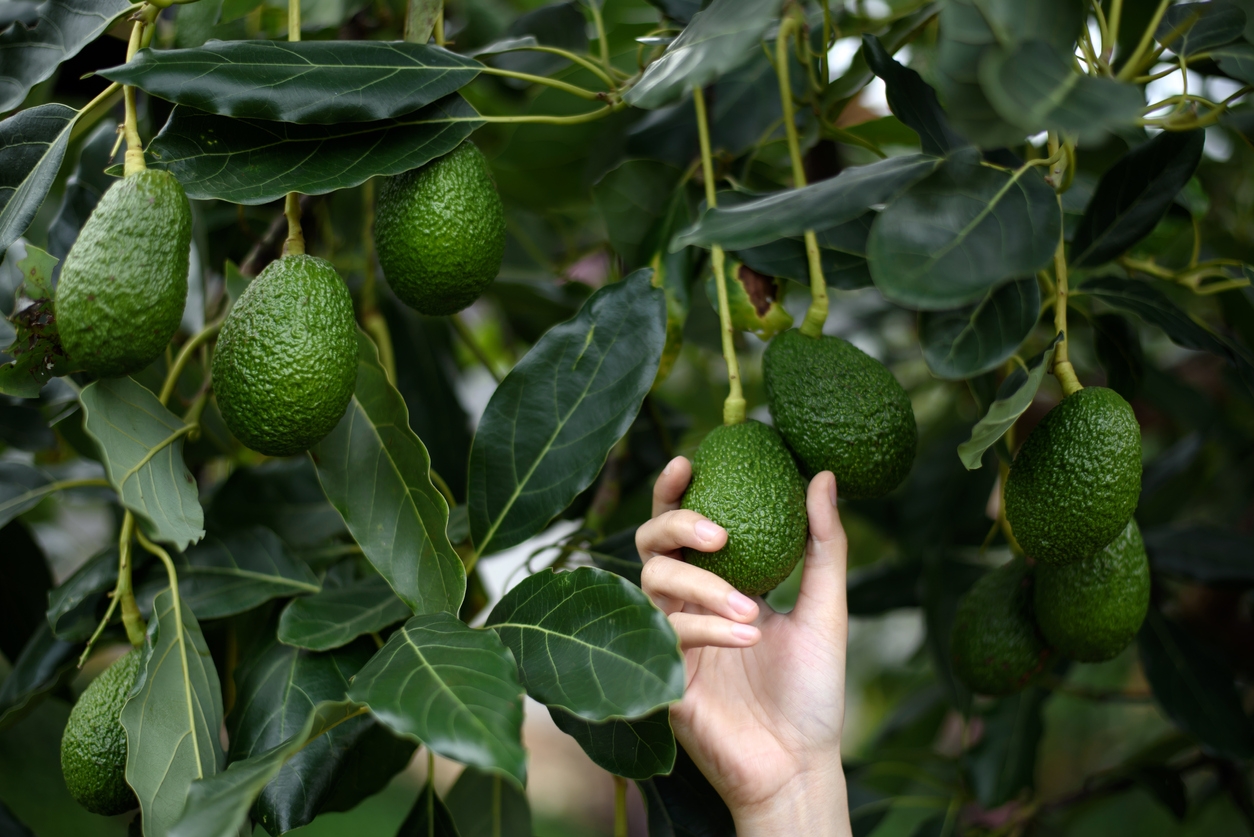Avocado Tree – How To Grow, Care For, And Harvest Avocados
Avocado is more than guacamole. If the only time you get a taste of this exotic fruit is when you splurge at a restaurant with an overpriced menu, you’re definitely missing out. With a distinct shape and unique buttery taste, avocados take up a well-deserved place among a growing list of healthy and wholesome foods. You can make salads, fries, and all kinds of toasts from this nutrition-packed fruit.
If you have an empty spot in your garden that you want to fill up with a tropical tree, the avocado tree is the right candidate for you. Provided you live in hardiness zones 10 to 12, you have a good chance of eating avocados from your own garden within a few years. Read more to find out all you need to know about this tree, how to care for and when to harvest the mature fruits.
Avocado Tree Info
The distinct shape of the fruit gave avocado (Persea americana) its name. To give you a hint, it’s similar to a part of the male anatomy. So you’ve been going around using suggestive language in Spanish all along without even knowing it.
A native of Mexico, the mature tree can reach about 60 feet if you let it. But that doesn’t mean that you can’t grow it indoors as a potted tree. You’ll just need a bigger container and constant pruning to keep the large tree compact and manageable.
Another reason to grow the avocado tree indoors is the weather. The tree enjoys warm weather and plenty of sunlight. So if you live in zones below 10, you can grow it in a pot and provide adequate temperature and light conditions to keep it healthy.
While partially self-pollinating, avocado trees have unique flowers. The flowers start off as females waiting to be pollinated. Then the next day those same flowers become males and start spreading around their seeds.
Although the avocado is large and fleshy when ripe, it’s not really a fruit. Technically speaking, it’s a berry with a seed in the middle. This seed is your easiest, but not the best way, to start an avocado tree in your backyard.
Avocado Varieties
The three main species of avocado are Mexican, Guatemalan, and West Indian. But the market is full of cultivars and hybrids to satisfy every taste. Here are some cultivars to consider.
- Hass: A type A avocado with more tolerance for cold weather. You can grow it in zones 9 to 11 without problems. The tree averages about 35 feet when mature and the fruit has a creamy flesh and high-fat content. It blooms in the early spring and the fruits take about 12 months on the tree to mature.
- Pinkerton: Similar to Hass in its cold tolerance and can grow in temperatures as low as 32 degrees F. The tree has a medium height but with a sprawling canopy. The rich and flavor-packed fruits had a small pit and more flesh compared to other cultivars. If you plant the Pinkerton, then you need to have a type B avocado tree nearby to pollinate it.
- Fuerte: A type B cultivar. It grows to 35 feet high and can tolerate cold weather with 28 degrees F. You can grow it in zones 9 to 11 although the tree has less tolerance for high temperatures. It blooms in the summer or fall and the fruits become ripe in the winter and spring. The fruits are usually large with easy-to-peel skin but with less oil content than type A cultivars.
- Bacon: You can grow this type B cultivar in zones 8 to 11. It has large fruits and blooms from the late winter all the way to the early spring. If you live in colder climates where the temperature might drop to 24 degrees F, this is the right avocado cultivar for you. The fruits have thin skin and the flesh turns creamy when ripe. The best way to eat it is with a spoon.
- Mexicola Grande: Another type A cultivar that tolerates short cold spells of 18 degrees F. The tree grows to 40 feet high so it can be challenging to grow it indoors. The tree blooms from mid-spring to early summer and the fruits ripen between August to October. The ripe fruits weigh about one pound each and the green skin turns black when ripe.
How to Grow Avocado
One of the easiest ways to start an avocado tree is to take the pit out of ripe fruit and plant. It’s a fun and simple process that anybody can do at home. Whatsmore, the pits have a high germination rate and you’re almost guaranteed to have a sapling growing at a home. However, if you want to eat avocados growing in your garden, then you should graft the tree not start it from seeds. It takes up to 8 years for a tree started from seeds to produce its first yield.
- Pick a healthy and ripe avocado fruit of the cultivar you like and gently extract the pit. Be careful not to damage the brown skin since it won’t germinate if the outer shell is broken.
- Decide which side of the pit is the top. It’s usually the narrow side where it sprouts from.
- Pierce the body pit with three toothpicks at equal spacing. Keep the toothpicks at a low angle since they serve as scaffolding.
- Fill a glass with water and balance the pit at the top so that the bottom is fully submerged in water.
- Keep the glass on a window sill that gets hours of sunlight. Change the water once every 5 days to prevent mold buildup.
- It usually takes up to 4 weeks for the pit to germinate. It might take longer with some cultivars so, patience is a virtue!
- The roots and sprouts appear almost at the same time.
- Wait for the sprout to reach about 6 inches then cut it down to 3 inches. This will trigger more sprouts out of the pit.
- Prepare the soil in a sunny spot in your garden. Break the top 5 inches and mix in some organic materials.
- Dig a hole a little deeper than the length of the taproot of the avocado sapling.
- Place the whole pit in the hole keeping only the base of the sprouts above ground.
- Fill the hole and firm the soil then water it.
Avocado Care
That was easy and fun. Which is more than can be said about caring for the tree. To be fair, there’s a lot to do and plenty of time to wait before you will see the first blooms and fruits on your tree. Also, check if the avocado cultivar you planted is self-pollinating or whether it needs another cultivar from a different type nearby to pollinate it.
Soil
As with all trees with shallow root systems, the avocado tree needs loose and well-drained soil. If you have clay or dense soil and you don’t think that amending it will fix the problem, then you can plant the tree on a mound. Build a mound about 2 feet high and 5 feet in diameter then plant the sapling on top. By the time the tree establishes in the true soil, the rootball would have developed strong enough to penetrate the dense soil. As for the soil pH, it should be neutral or slightly acidic as with most other garden plants. Amend the pH levels to bring them up or down to 6.0 or 6.8.
Water
As a tree that starts its life half-submerged in water, the avocado tree requires a lot of water in the first couple of years of its life. You’ll need to water it between two to three times a week. Once established, the tree will need less and less watering as its roots get the moisture they need from the deep soil. Watering the mature tree should be aimed at getting the soil thoroughly wet then allow it to dry. This gives you an idea of the tree’s watering pattern since you can adjust it according to how fast the soil dries out in your zone.
Fertilizer
The avocado tree is a heavy feeder. It grows well in rich soil and requires regular fertilizer applications throughout its life. In the early stages, you’d want the tree to grow strong, bushy, and fast. So apply nitrogen-rich fertilizer once every month. You can replace it with slow-release organic compost or aged manure once every three months. Keep applying it during the flowering and growing seasons. Once the fruits mature, you can hold off fertilizing until the start of the growing season again.
Pruning
How much pruning your avocado tree depends on where you grow it. A tree growing outdoors will need minimum pruning. However, in the early stages of growth, you’ll need to trim the single stem that shoots out of the ground. This encourages the tree to grow more branches and become bushy. As for the mature tree, you’ll just need to trim off any wayward branches, broken ones, or those that get entangled.
Potted avocado trees are a different matter. You’ll have to prune them regularly to keep their size compact and their canopy manageable. Apart from the main branches, cut out any offshoots or lateral branches that grow out of shape.
Pests and Diseases
Although the avocado tree has a high content of the toxic persin which only humans and cats are immune to, pests are not deterred. Mites, thrips, and caterpillars are the most commons bugs that attack your tree. Use neem oil to get rid of these pests and remove any weeds or debris that might act as a host for the insects.
Root rot and laurel wilt are the two common diseases you have to deal with. Root rot is caused by overwatering or salt buildup in the soil as a result of applying excessive chemical fertilizers. Laurel wilt is a lethal fungal infection spread by beetles. So keep these insects away from the tree and keep the garden clean.
Harvesting Avocados
Unlike other fruits, avocados don’t give an indication that they are ripe. The fruits mature on the tree but they ripen after being harvested. If you leave the fruits for too long on the tree they become mushy and overripe before they fall off the tree. So how would you know if the fruits are ready to harvest or not?
Pick the largest avocado on the tree and leave it in a dark room for up to a week. Test the fruit with your thumb. If it gives in a little under the pressure, then your fruits are ready to pick. Peel the skin off and check the flesh has turned creamy. If the flesh shrinks or becomes bitter, then the fruits are not ripe yet. Give them another month before trying again.



